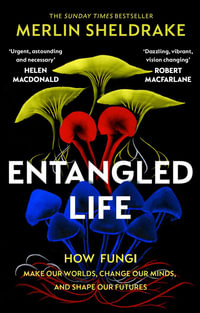Preface ix
Abbreviations x
1 Introduction to Drug Targets and Molecular Pharmacology
1
1.1 Introduction to molecular pharmacology 1
1.2 Scope of this textbook 2
1.3 The nature of drug targets 3
1.4 Future drug targets 7
1.5 Molecular pharmacology and drug discovery 11
References 12
2 Molecular Cloning of Drug Targets 13
2.1 Introduction to molecular cloning ? from DNA to drug
discovery 13
2.2 ?Traditional? pharmacology 14
2.3 The relevance of recombinant DNA technology to
pharmacology/drug discovery 14
2.4 The ?cloning? of drug targets 15
2.5 What information can DNA cloning provide? 20
2.6 Comparing the pharmacologic profile of the
?cloned? and the ?native? drug target
23
2.7 Reverse pharmacology illustrated on orphan GPCRs 24
2.8 Summary 27
References 27
3 G Protein-coupled Receptors 31
3.1 Introduction to G protein-coupled receptors 31
3.2 Heterotrimeric G-proteins 36
3.3 Signal transduction pathways 40
3.4 Desensitisation and down-regulation of GPCR signalling
44
3.5 Constitutive GPCR activity 45
3.6 Promiscuous G-protein coupling 47
3.7 Agonist-directed signalling 48
3.8 Allosteric modulators of GPCR function 49
3.9 Pharmacological chaperones for GPCRs 50
3.10 GPCR dimerisation 51
3.11 GPCR splice variants 63
3.12 Summary 67
References 67
Useful Web sites 70
4 Ion Channels 71
4.1 Introduction 71
4.2 Voltage-gated ion channels 73
4.3 Other types of voltage-gated ion channels 89
4.4 Ligand-gated ion channels 109
4.5 Summary 125
References 125
5 Transporter Proteins 129
5.1 Introduction 129
5.2 Classification 129
5.3 Structural analysis of transporters 132
5.4 Transporter families of pharmacological interest 133
5.5 Transporters and cellular homeostasis 167
5.6 Summary 169
References 169
6 Cystic Fibrosis: Alternative Approaches to the Treatment of
a Genetic Disease 175
6.1 Introduction 175
6.2 Cystic fibrosis transmembrane conductance regulator 179
6.3 Mutations in CFTR 183
6.4 Why is cystic fibrosis so common? 184
6.5 Animal models of Cystic fibrosis 186
6.6 Pharmacotherapy 186
6.7 Gene therapy 191
6.8 Conclusion 195
References 196
7 Pharmacogenomics 201
7.1 Types of genetic variation in the human genome 201
7.2 Thiopurine S-methyltransferase and K+ channel polymorphisms
202
7.3 Polymorphisms affecting drug metabolism 204
7.4 Methods for detecting genetic polymorphisms 209
7.5 Genetic variation in drug transporters 211
7.6 Genetic variation in G protein coupled receptors 215
7.7 Summary 225
References 225
Useful Web sites 226
8 Transcription Factors and Gene Expression 227
8.1 Control of gene expression 227
8.2 Transcription factors 229
8.3 CREB 233
8.4 Nuclear receptors 238
8.5 Peroxisome proliferator-activated receptors 240
8.6 Growth factors 247
8.7 Alternative splicing 247
8.8 RNA editing 251
8.9 The importance of non-coding RNAs in gene expression 257
8.10 Summary 270
References 271
9 Cellular Calcium 277
9.1 Introduction 277
9.2 Measurement of calcium 278
9.3 The exocrine pancreas 289
9.4 Calcium signalling in pancreatic acinar cells 292
9.5 Nuclear calcium signalling 303
9.6 Conclusions 310
References 311
10 Genetic Engineering of Mice 315
10.1 Introduction to genetic engineering 315
10.2 Genomics and the accumulation of sequence data 315
10.3 The mouse as a model organism 318
10.4 Techniques for genetic engineering 319
10.5 Examples of genetically-engineered mice 332
10.6 Summary 334
References 334
11 Signalling Complexes: Protein-protein Interactions and
Lipid Rafts 339
11.1 Introduction to cell signalling complexes 339
11.2 Introduction to GPCR interacting proteins 340
11.3 Methods used to identify GPCR interacting proteins 340
11.4 Functional roles of GPCR interacting proteins 345
11.5 GPCR signalling complexes 348
11.6 GPCR and ion channel complexes 355
11.7 Ion channel signalling complexes 356
11.8 Development of pharmaceuticals that target GPCR interacting
proteins 356
11.9 Development of pharmaceuticals that target protein-protein
interactions 356
11.10 Lipid rafts 357
11.11 Receptor-mediated endocytosis 361
11.12 Summary 364
References 364
12 Recombinant Proteins and Immunotherapeutics 367
12.1 Introduction to immunotherapeutics 367
12.2 Historical background of immunotherapeutics 368
12.3 Basis of immunotherapeutics 368
12.4 Types of immunotherapeutics 369
12.5 Humanisation of antibody therapy 372
12.6 Immunotherapeutics in clinical practice 376
12.7 Advantages and disadvantages of immunotherapy 378
12.8 The future 379
12.9 Summary 380
References 380
Glossary 381
Index 403
























